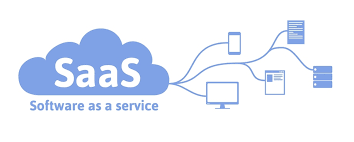What is Enterprise SaaS?
Technology has continually developed ever since it has started. During the pre-internet time, application installation used software CDs. The need to purchase the software brought issues and inconvenience to businesses, giving birth to the evolution of SaaS or Software as a Service. We have witnessed its growth to where it is today – empowering business processes and many more advantages.
Software as a Service became an alternative to traditional software installation. A server requires a constant upgrade and the need to keep every computer up to date. With SaaS, the applications reside in a remote cloud-based network which the user can access through the internet. Most SaaS applications run straight from the web and do not require downloads and installation.
It operates like a rental wherein a business needs to pay for the membership for the software usage. Any SaaS product development company in the market provide services to design, execute, and conduct maintenance to SaaS solution users. This platform is attractive to small businesses and even large corporations with its overall experience.

What are the Benefits of using SaaS?
The SaaS industry is approximately $145 billion from $31.5 billion in 2015. That equates to 5x the growth of the industry.
Cost-Efficient
It saves you money since there is no need to buy software on CDs and the membership fee is cheaper since it is a shared application by its users. It is advantageous for startups and small companies, knowing that hardware and licensing may cost a hefty amount. Otherwise, they will not use it and settle for traditional sources. Software maintenance is also taken care of by the provider.
Save on Time and Effort
Say goodbye to waiting for long hours of installation and the issues it may encounter upon deployment. Registration usually takes a few minutes to complete and configuration, which may take up to a couple of hours before it gets ready for use. Setting up is uncomplicated since it is directly available in the cloud.
Integration
SaaS applications can easily be integrated into other SaaS solutions making it easier to incorporate Artificial Intelligence technology. And with the use of automation and integration, business processes have improved exponentially.
Flexibility
SaaS solutions offer more flexibility compared to traditional software installation. The user can tailor the setup to the organization’s needs to be able to utilize every feature. It can create a seamless connection with other platforms and maximize functionality.
Upgrades
The SaaS provider is responsible for the upgrade and maintenance, eliminating the nuisance and expenses to its user. Unlike the traditional practice, the user needs to buy the whole upgrade package that costs a fortune.
Mobilization
Mobilizing the workforce is trouble-free since the users can access the SaaS solution anywhere as long as there is the internet. The user may use a laptop, tablet, or mobile phone; this software can run regardless of the device.
However, with the numerous advantages embodied in SaaS solutions, it has its fair share of challenges and risks to consider.
What are the Downsides of SaaS?
Users to Adhere to Updates and Versioning
SaaS providers sometimes impose unwanted changes leaving the user with no choice but to comply with the software updates. It then forces the company to use the updated version and, unable to defer the change in features. They left the need for businesses to execute mandatory training to upskill their users.
Connectivity
Since SaaS is internet-based, deprivation to connectivity may hinder the operation, thus losing access to data and software solutions.
Lack of Control
It can happen to any software solution that may cause a halt within the operations. What’s difficult is that because it is a provider, fixing the issues that can arise may take time since the user can only reach the support through chat or email, which is not always reliable.
Slow Performance
Due to its host not being in a local server, it may run slower at some point than an on-premise server. Network latency may affect rendering and decrease productivity. SaaS users include a variety of web-based products. From startup companies to small product vendors to big web-based companies such as AWS and Google.
Below are the examples of well-known SaaS solutions widely used by B2B or B2C markets:
- Google Workspace
- Salesforce
- Dropbox
- Hubspot
- Trello
- Asana
- Netflix
- Slack
- Shopify
- Mailchimp
- Zoom
- Microsoft 365
Its various products differ from analytic tools to project management software and essential software needed for businesses such as Email, Customer Relationship Management Systems, Human Resources, Financial Management, Inventory Systems, and many more. There is always a SaaS solution available for a particular industry.
In 2026 it is believed that 50% of organizations will make SaaS application management centralized.
